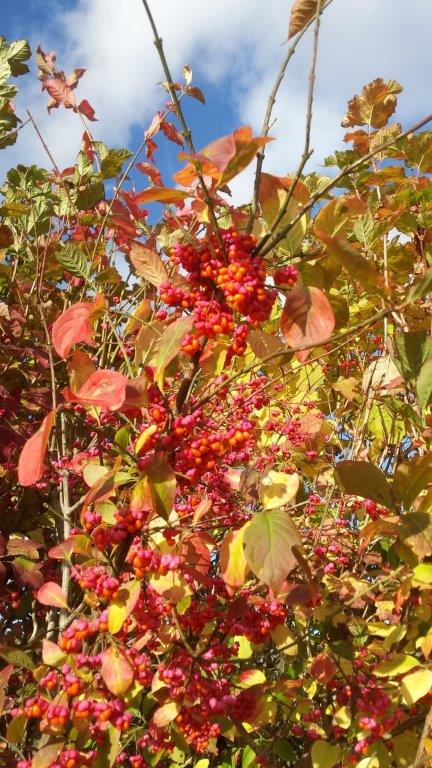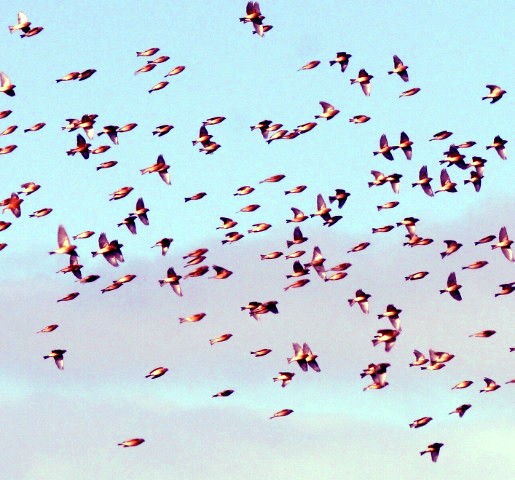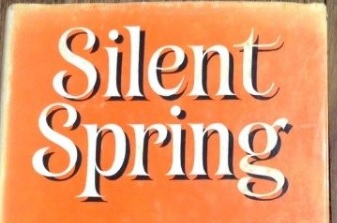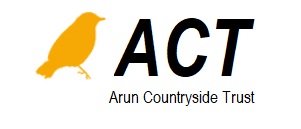 Those venturing out into the Mid Arun Valley this October, perhaps to admire the bronzes, reds and golds of the autumn leaves in the Binsted Woods complex and the numerous hedgerows and shaws radiating from this ancient woodland, are likely to disturb a flock of our feathered friends fanatically feeding. Goldfinches frequently join forces, with up to fifty individuals scouring the countryside for food, and descending upon fields, favouring those with knapweed and thistles, now brimming with seeds. When disturbed they rise as one, showing flashes of red and gold as they seek safety in the branches of a nearby shrub or tree.
Those venturing out into the Mid Arun Valley this October, perhaps to admire the bronzes, reds and golds of the autumn leaves in the Binsted Woods complex and the numerous hedgerows and shaws radiating from this ancient woodland, are likely to disturb a flock of our feathered friends fanatically feeding. Goldfinches frequently join forces, with up to fifty individuals scouring the countryside for food, and descending upon fields, favouring those with knapweed and thistles, now brimming with seeds. When disturbed they rise as one, showing flashes of red and gold as they seek safety in the branches of a nearby shrub or tree.
Flocking frequently crosses the species barrier, for birds with different uniforms or plumages often form alliances. A variety of tits may be spotted with other small birds such as goldcrests and treecreepers. It is quite something to see one of these flocks passing through, for each species has its own area of expertise. Blue tits thoroughly forage through the canopy, whereas great tits prefer the pickings of the lower branches. Nuthatches and treecreepers tend to hug the trunk, the latter upside down! Tiny goldcrests, with their distinctive black and yellow head-stripe, flutter amongst the crowd probing for insects. Such flocks are as one, flitting and fidgeting together, moving from tree to tree.

But why such camaraderie, when just months ago these birds were fiercely defending precious territories? As autumn advances to winter, food sources become increasingly patchy and scarce. Many eyes scouring the countryside increase the odds of spotting a good stand of seed-laden thistles, or a sheltered clump of trees more likely to harbour hidden invertebrates. Those in the know believe that information is shared within such flocks. The young may learn from the old; flocks may observe other flocks – all willing to utilise any scrap of information – for the ultimate goal is to survive the winter with its diminishing food supply.
Of course, all things good have a down side. Bigger, older, and more dominant birds, will feed well at the expense of the young and the weak. Such unfortunates will also find themselves at the edge of the crowd – where predators such as sparrowhawks and foxes have learned that pickings are usually easier. Yet, despite this, whatever ones status, those forming autumn alliances, increase their chances of survival through the autumn and winter months.
 It is more than 50 years since Rachel Carson published her book "Silent Spring", in 1962. In that time, UK population has increased by 25%, and world population has more than doubled. This growth in the human flock has a growing impact on bird flocks around the world, whether through pollution and poison as Rachel Carson signalled, or through climate change, and massive land use changes affecting birds' habitats and food species.
It is more than 50 years since Rachel Carson published her book "Silent Spring", in 1962. In that time, UK population has increased by 25%, and world population has more than doubled. This growth in the human flock has a growing impact on bird flocks around the world, whether through pollution and poison as Rachel Carson signalled, or through climate change, and massive land use changes affecting birds' habitats and food species.
Concerned people are flocking together to help the diversity of life survive this man-made winter of our relationship with nature. Click here to read about Chris Packham's People's Manifesto for Wildlife.

"Feed the birds, tuppence a bag." Every twopence counts; and time and work given to nature are worth more than money. Would you like to help and support Arun Countryside Trust - MAVES, as a volunteer or donor, as we seek to act locally?
